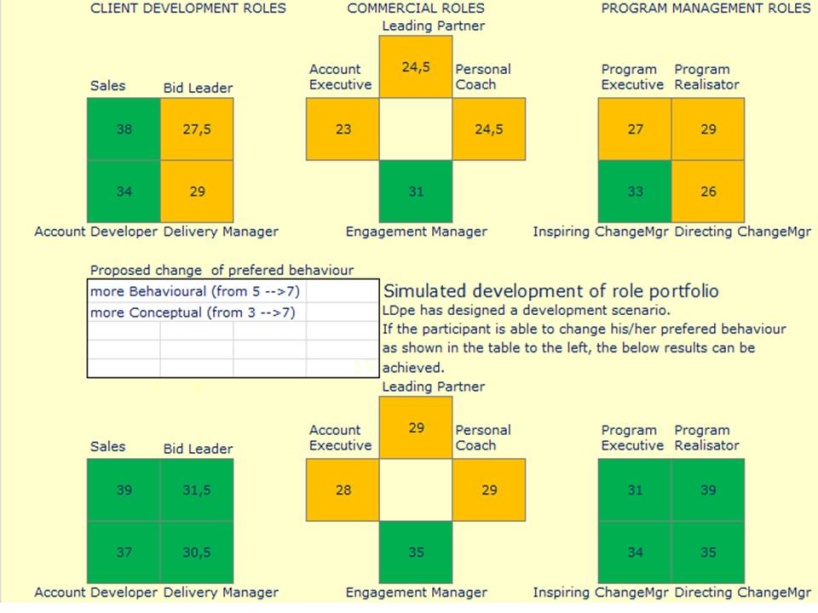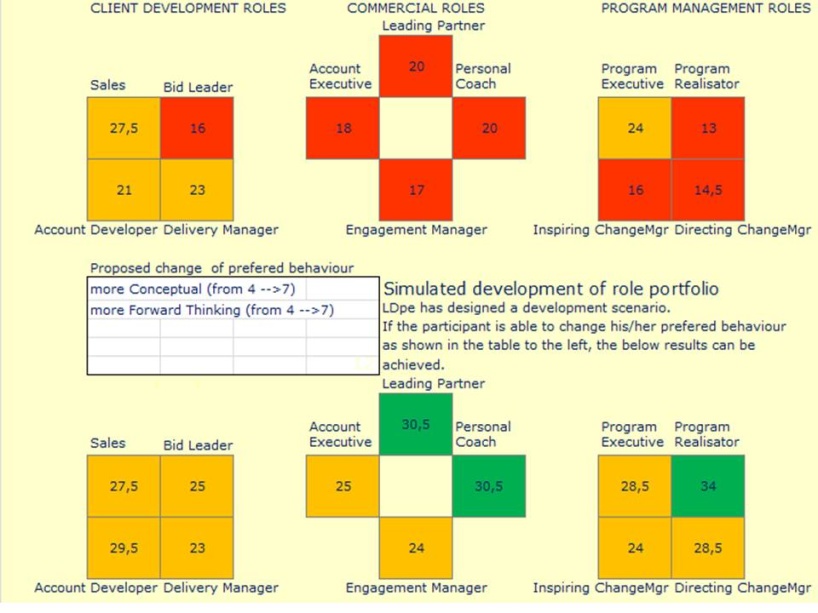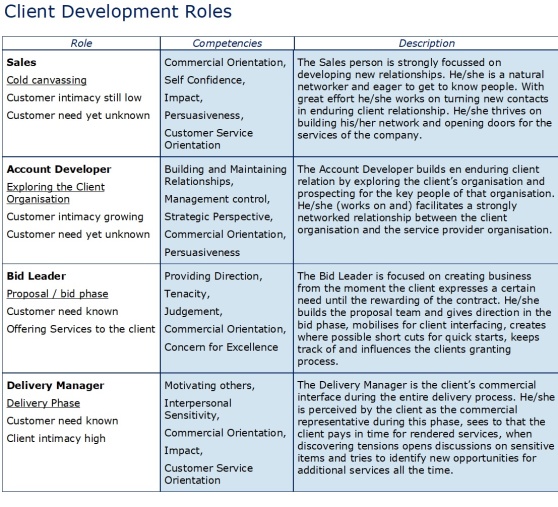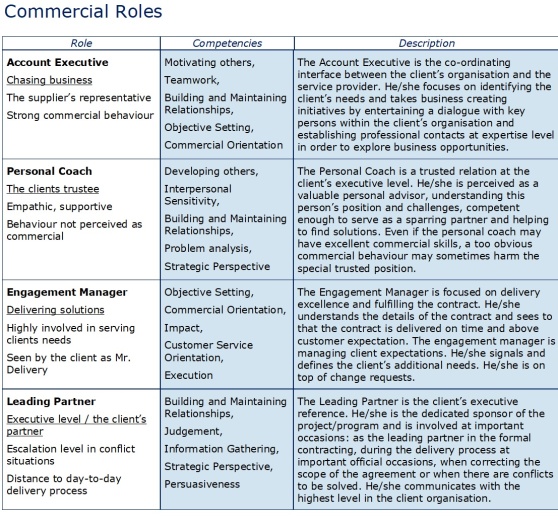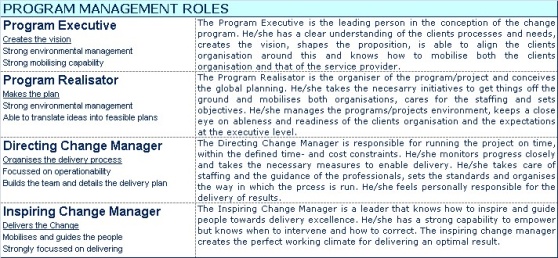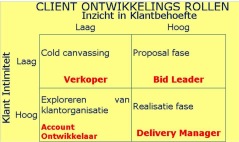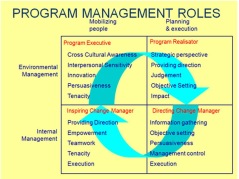PROFESSIONAl roles
Leadership is not limited to managerial roles in the organizational hierarchy. Leadership is also required for developing markets, developing a large account, acquiring a big deal, delivering the contracted services or leading organizational change, etc. Such roles, hereinafter referred to as ' professional roles' require specific combinations of leadership qualities.
But also the domains of Business Development, Sales and Change Management are aso broad that a 'professional leader' cannot be good in all aspects of the field. That is why many specialised education programs create a special language for the field they cover, for example for Client Development, Commercial roles or for Program Management.
Different from the domain of leadership theories, most education programs for the areas of Business Development, Sales, Intervention and Change Management and Program and Project Management are based on a specific method that is not common outside the scope of their methodology. LDpe saw a need for a consistent, more generally applicable language, not specifically based on a certAIN methodology, but on the talent and personality of the professional leader. That is why we have defined a number of concepts that allow the leader to analyze the different parts of a specific role and see where his/het specific qualities lie and how he/she will be able to grow in certain roles (for example by following the proposed simulation scenarios). Within the LD Toolbox we have defined the different Professional Roles as follows. First of all, we looked at which competencies are required for a particular role. We then determined the 'job description' based on this information. See the table below
ROLES IN LEADING CHANGE
The most common way to organize change processes is in the form of projects or programs. There are many opinions about the differences between a program and a project and we can occasionally follow the discussion on the internet. For example in an article by Robert Pietro: 'Program management differs from project management in a number of fundamental ways. Simply put, program management involves a number of integrated, formulated projects that pursue a broader, strategic business result. Program management is not just the sum of all project management activities, but it also involves managing the risks, opportunities and activities that arise in the 'white space' between projects. While an individual project deserves a specific project realization approach (design-bid-build, design/build, etc.), program management may require different types of approaches across different projects in order to achieve the desired strategic business goals.
The first model in the field of Business Development and Acquisition relates to the client development role of the professional leader. This model was specially developed for account managers. There are different situations when developing an 'account'. In a new relationship, customer intimacy is still low and growing the relationship is one of the goals for the account manager. In 'sales' terminology we speak of 'hunters' (looking for new customers) and 'farmers' (those who develop a long-term intimate relationship with the customer organization). But other qualities are also needed for designing and scoring the contract ('deal shapers'). After the project has been contracted, the realization phase also requires specific qualities.
The second model in Business Development & Acquisition concerns the division of roles when the supplier knows the customer needs and can submit a project proposal and then deliver. This is the commercial role model. Particularly during the proposal phase, there are more or less two 'camps' with different interests, a 'camp' in the customer organization and a 'camp' in the supplier organization.
The customer organization “camp” may have to deal with several competing potential suppliers, while the supplier organization is focused on winning the contract.
Those involved in the supplier organization will be able to contribute best if they each fulfill a specific role towards the customer organization. For example, if one person clearly wears the hat of the person responsible for sales (the Account Executive). While the consultant, who has already built up a relationship of trust with the management of the client organization, should not exhibit typical commercial behavior but should continue to identify with the client and his problems. One of the executives in the supplier organization should play the role of the leading partner, etc. Below are the definitions of the roles in both models above.
A project can be defined as the realization of a certain functionality within an agreed time within an agreed budget. Project leaders tend to focus on that, the 'internal project'. But the program manager must achieve a strategic business outcome, from the company's point of view. The program manager must realize the 'internal project' in the context of 'the environment' and deliver a functioning process in a 'new' organization.
The LDpe Program Management
Role Model
Role Model
The program management role model, developed by LDpe in dialogue with a working group of Scandinavian program and project managers, distinguises environmental management versus internal management and focuses on the mobilization of people and organisation (in the client organisation the project team) on the one hand and the activities related to planning and implementation on the other. The four roles (Program Executive, Program Realizer, Directing Change Manager and Inspiring Change Manager each require a number of specific competencies (shown in the four boxes).
ROLE PORTFOLIO OF PROFESSIONALS WITHIN AN ORGANISATION
Not every salesperson or account manager is an all-round professional who is good at all 'sports'. One person is ideally suited to developing a relationship with a customer, especially for the long term, while the other relies on his ability to quickly make new contacts. Especially with larger service providers and organizations with larger groups of salespeople and account managers. there is often a need to deploy employees in the areas they are good at. The 'fit for role' and 'quick-wins' module of the LD Toolbox is therefore often used to achieve a redistribution of tasks under the motto 'the right man/woman in the right place.'
Below we show an inventory of professional role portfolios from a representative group of 38 participants. We also show the individual Quick Wins scenario for three participants below, including the potential effects.
We will classify the participants into 3 categories:
- Probably fit for role (scores above 30); Not yet fit for role (between 20 and 30); Not fit for role (scores below 20).
In the charts below we show in percentage terms how many professionals in the relevant group are suitable, not yet suitable or unsuitable for the role
In the Quick-Wins potential column we show the potential growth of the group of participants using: the established individual Quick-Wins program.
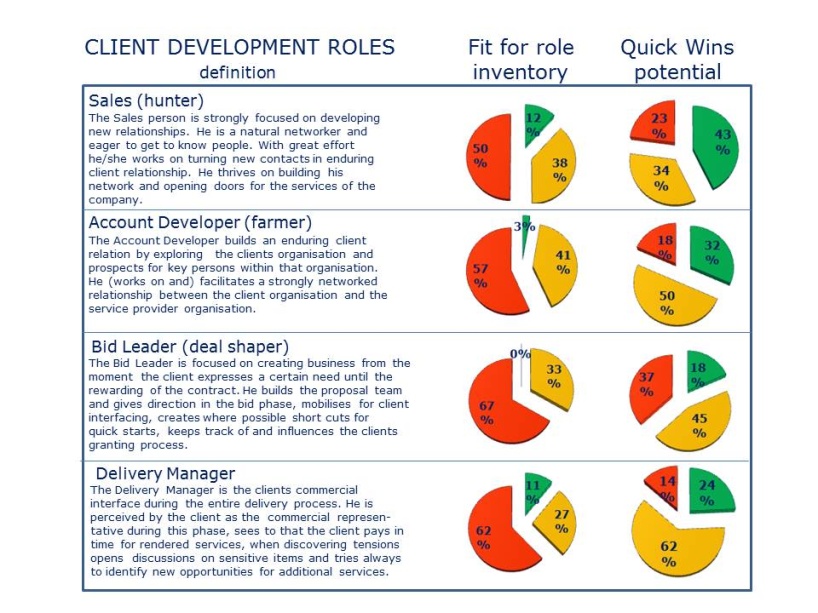
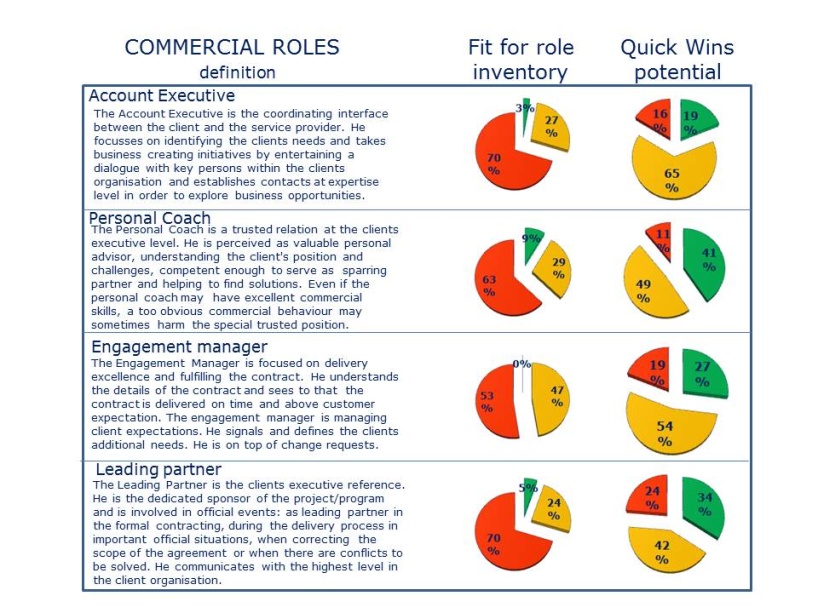
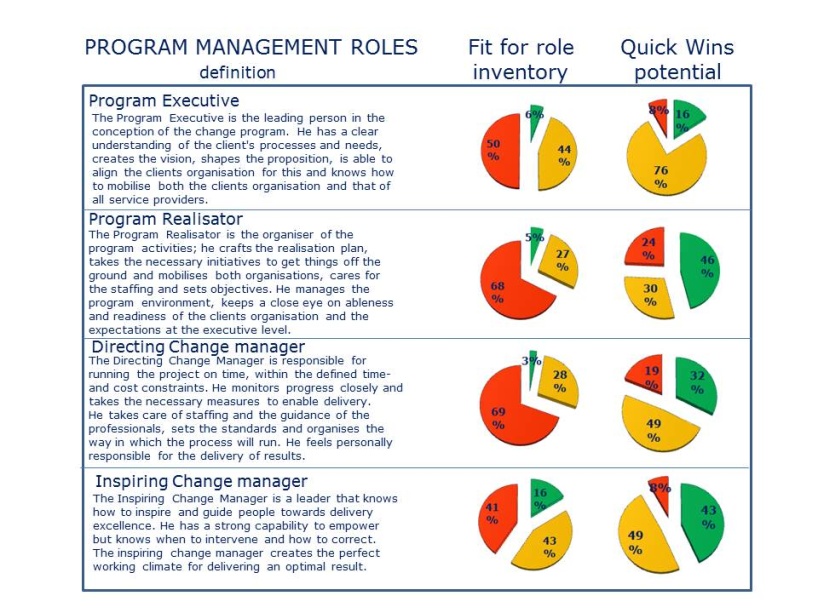
Examples of individual Quick-Wins programs
The LDT simulation module helps the participant to analyse the impact of conscious adjustment of behavioral preferences.
By changing his/her behavioral preferences, the participant can strengthen his/her competencies and develop a broader style portfolio, allowing him/her to qualify for multiple roles.

